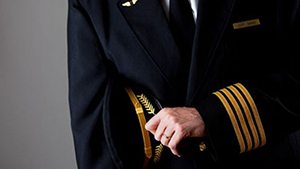Airlines are flying into trouble as they face a shortage of pilots – especially in the Middle East as Dubai develops into a major international hub.
Aircraft builder Boeing reckons the Middle East alone will need 40,000 new pilots and more than 50,000 specialist technicians and engineers over the next 15 years just to keep pace with the growth of air travel in the region.
The firm has looked at the market and order books and expects thousands of new aircraft to roll off the production lines in that period.
Emirates, the United Arab Emirates airline based in Dubai, demands a constant flow of nearly 2,000 pilots and flight engineers a year to replace former staff and to swell the numbers of aircrew as new aircraft join the fleet at a rapid rate.
Training centres
The airline is adding three new Boeing 777s a month to the fleet.
Training centres are struggling to keep up with the demand, as other airlines in the region also strive to train and recruit the most talented aircrew.
Two training centres in the UAE have 1,300 full time and 500 part time student pilots and engineers. Another air school in Jordan turns out 130 pilots a year and wants to up the number to nearer 200 while expanding to a second training centre in Iran.
“With tens of thousands of aircraft likely to be delivered over the next two decades, airlines are going to see a huge demand for pilots and engineers to keep them in the air,” said Boeing’s market outlook report.
Cheaper flights
“In our opinion, the worldwide airline industry will need more than a million pilots and technicians to make sure the jetliners keep flying.”
But demand from the Middle East for 2,600 airliners is dwarfed by that from North America and Europe, both requiring in excess of 7,000 airliners each – while the Asia Pacific is calling for at least 13,000 new planes.
“We predict that around 36,000 new aircraft are needed,” said Boeing. “Around 40% or 14,000 will replace older jetliners and the rest will go towards the growth of air travel. The orders for new planes should cut costs and make air travel greener for passengers as the aircraft are more fuel efficient and have less carbon emissions.”
The jet manufacturer points out that despite the flagging world economy, air travel grew at a steady 5% a year, which was the pre-downturn trend and is expected to continue to increase at the same pace over the next 20 years.
